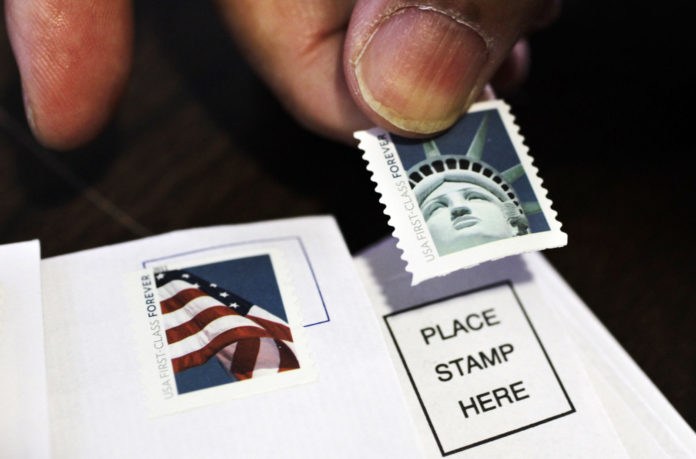
Due to the pandemic, voting will look a lot different in 2020. Among the concerns is the efficacy and reliability of voting by mail, which has been called into question by national leaders including POTUS. The Keys Weekly reached out to Debra Fetterly, with the U.S. Postal Service covering the Alabama and South Florida districts, and the Keys’ Supervisor of Elections Joyce Griffin.
ON MAILING BALLOTS:
Q: Are the Post Offices in Monroe County fully staffed? If not, how many positions are open?
A: The Postal Service is flexing its available resources to match the workload created by the impacts of the ongoing Coronavirus (COVID-19) pandemic.
Q: As recently as last week, the lobby of the main Marathon Post Office was closed at 3 p.m. Can you tell us why this is? Are other Post Office lobbies closing early in the Keys?
A: The Marathon Post Office recently made a temporary adjustment in its operating hours, but has resumed its normal schedule. We appreciate the patience of our customers and the efforts of employees as conditions change on a day-to-day basis.
Q: Does the Post Office make any operation changes in anticipation of the return of mail-in ballots either in August or November?
A: The United States Postal Service is committed to fulfilling our role in the electoral process when public policy makers choose to utilize us as a part of their election system. We provide election officials who are mindful of our operational standards with a secure, efficient and effective means to enable citizens to participate in elections. We offer a powerful, national communications channel, which enables candidates and interest groups to directly reach every home and business for the purpose of informing the public about the issues and policies at stake when they vote.
The Postal Service is committed to delivering Election Mail in a timely manner. We employ a robust and proven process to ensure proper handling of all Election Mail, including ballots. This includes close coordination and partnerships with election officials at the local and state levels. As we anticipate that many voters may choose to use the mail to participate in the upcoming elections due to the impacts of the COVID-19 pandemic, we are conducting and will continue to proactively conduct outreach with state and local election officials and Secretaries of State so that they can make informed decisions and educate the public about what they can expect when using the mail to vote. As part of these outreach efforts, we will discuss our delivery processes and will consult with election officials about how they can design their mailings in a manner that comports with postal regulations, improves mailpiece visibility, and ensures efficient and cost-effective processing and delivery.
Also, we would emphasize that a letter to election officials was a follow-up to the more extensive 2020 Official Election Mail Kit (Kit 600), which was distributed to 11,500 election officials in March. In addition, we will be sending a letter in the near term to election officials in states that have deadlines for requesting and casting mail-in ballots that under our reading of their election laws appear to be incongruous with the Postal Service’s delivery standards.
Q: Have the local Post Offices already seen an influx in ballot returns? Historically, is there a “peak” (number of days before an election) where mail-in ballots are flowing through the local Post Office?
A: Please refer to # 3.
Q: If a Monroe County resident mails a ballot in the Keys, is it processed at a Miami mail center before returning to the Keys? How many days does that take?
A: Yes, Monroe County ballots are processed at the Miami Processing and Distribution Center. The service standard is two days. All available mail and packages are being delivered each day.
Customers who opt to vote through the U.S. Mail must understand their local jurisdiction’s requirements for timely submission of absentee ballots, including postmarking requirements. Voters must use First-Class Mail or an expedited level of service to return their completed ballots. In order to allow sufficient time for voters to receive, complete and return ballots via the mail, and to facilitate timely receipt of completed ballots by election officials, the Postal Service strongly recommends that jurisdictions immediately communicate and advise voters to request ballots at the earliest point allowable but no later than 15 days prior to the election date. The Postal Service recommends that domestic, non-military voters mail their ballots at least one week prior to their state’s due date to allow for timely receipt by election officials. The Postal Service also recommends that voters contact local election officials for information about deadlines.
Q: Has the local Post Office management been in touch with the Supervisor of Elections, in terms of knowing what to expect?
A: As a continuation of our ongoing outreach efforts aimed at educating all interested parties about the Postal Service’s mailing requirements and services in advance of the 2020 elections, we recently distributed a letter to local and state election officials and state party officials around the country that highlights key aspects of Election Mail delivery processes — and ways to help educate the public on what to expect when using the mail to vote. Please see this link: https://about.usps.com/newsroom/national-releases/2020/0529-usps-provides-recommendations-for-successful-2020-election-mail-season.pdf.
Please refer to # 3.
Q: What challenges does the likely increase in mail-in ballots pose for the local Post Office?
A: The Postal Service’s financial condition is not going to impact our ability to process and deliver election and political mail. The Postal Service has ample capacity to adjust our nationwide processing and delivery network to meet projected Election and Political Mail volume, including any additional volume that may result as a response to the COVID-19 pandemic. Our network is designed to handle increases in volume and deliver that mail in a timely manner. Additionally, the Postal Service has long-standing processes to align workforce to workload, including contingencies to respond to events like the COVID-19 pandemic. The Postal Service maintains steady communications with mailers during events that require specific responses and advises residential customers and business mailers with regard to postal facility disruptions that may impact delivery in an affected area via its USPS Service Alerts webpage at: https://about.usps.com/newsroom/service-alerts/.
As the Postmaster General recently reiterated, the Postal Service is in a financially unsustainable position, stemming from substantial declines in mail volume, and a broken business model. We are currently unable to balance our costs with available funding sources to fulfill both our universal service mission and other legal obligations. Because of this, the Postal Service has experienced over a decade of financial losses, with no end in sight, and we face an impending liquidity crisis.
As we have repeatedly stated, Congress and the Postal Regulatory Commission must enact legislative and regulatory reforms to help address the situation. At the same time, it is imperative for the Postal Service to operate efficiently and effectively, while continuing to provide service that meets the needs of our customers. We recognize that there are alternatives to every product that we offer, and for that reason high-quality, reasonably-priced service is an imperative, but it is equally important to note that high quality service and efficient service are not mutually exclusive, but in fact necessarily go hand-in hand if we are to be self-sustaining as required by law. Indeed achieving both is the only way that the Postal Service can continue to survive as a self-funded entity and to provide prompt, reliable, and reasonably-priced universal postal services for all Americans over the long-term.
As such, we are vigorously focusing on the efficiency of our operations as a fundamental strategy to enable the provision of high-quality service in a financially sustainable manner. To start with, we have taken immediate steps to better adhere to our existing operating plans, which were developed precisely to ensure that we meet our present service standards in an efficient and effective manner. By running our operations on time and on schedule, we will enhance our ability to be sustainable and to be able to continue to provide high-quality, affordable service. Of course we acknowledge that temporary service impacts can occur as we redouble our efforts to conform to the current operating plans, but any such impacts will be monitored and temporary as the root causes of any issues will be addressed as necessary and corrected as appropriate. Further, we will also continually review our operational practices and make adjustments as required to ensure that we operate in an efficient and effective manner.
Q: Does an official mail-in ballot require postage?
A: Unless the state or local election official provides a prepaid return envelope, voters must ensure that the appropriate postage is affixed to their return ballot envelope. To help voters, the Postal Service requires election officials to inform voters of the amount of First-Class postage required to return their ballots. Not only is proper postage required by federal law, but it also helps ensure timely processing and delivery by the Postal Service.
If a return ballot is nevertheless entered into the mailstream with insufficient or unpaid postage, it is the Postal Service’s policy not to delay the delivery of completed absentee or vote-by-mail ballots. We are proactively working with state and local election officials on mailing requirements, including postage payment. In cases where a ballot enters the mailstream without the proper amount of postage, the Postal Service will collect postage from the appropriate Board of Elections.
_____________
ON THE ELECTION:
The president’s stated concerns about mail-in ballots being potentially fraudulent has stirred up confusion. What’s the difference between mail-in ballots and absentee ballots? There is no difference between the two. “Voting rights experts say there is no difference between the terms mail-in voting and absentee voting, and some jurisdictions such as Florida have scrubbed the latter term to avoid confusion among voters,” according to a July 30 article by Andrew Desiderio in Politico.
Forty-two states and the District of Columbia will allow any voter, regardless of age, health or location on Election Day, to vote by mail should they choose to do so. The remaining eight states, including the large states of Texas and New York, require a valid excuse for a voter to request a vote-by-mail ballot for November.
How many mail-in ballots have been requested in Monroe County for the Aug. 18 election? More than 18,000.
When is the latest a Keys voter can request a mail-in ballot? Such requests can be made online at keys-elections.org until Saturday, Aug. 8.
When does it need to be mailed back? Right away. Or it can be dropped off at any of the three elections offices in the Keys. There are vote-by-mail drop boxes at all early voting locations that are being watched by a poll worker, so voters can just drive by and drop their ballot. (Also, see the fourth answer on the opposite side of the page.)
Who gets a ballot in August? Because the Aug. 18 election is a primary, voters from Stock Island through the north end of the county will not get a ballot if they are not registered as a Democrat or Republican. All Key West voters will get a ballot because the city’s mayor’s race is nonpartisan.
When is early voting? It has already started and runs through Saturday, Aug. 15.





















